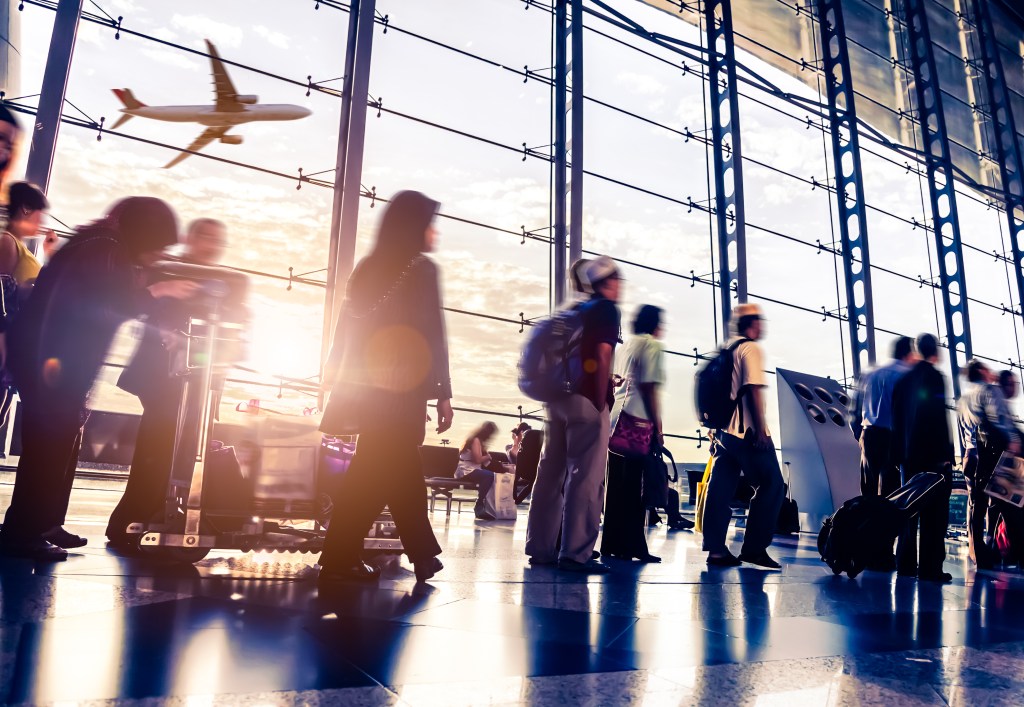Your face could soon be your airline boarding pass

This month, some passengers at Logan International Airport will board their planes without the typical paper boarding pass. Instead, they’ll use a “biometric boarding pass,” a form of identification that harnesses the power of fingerprint scanners and facial recognition software.
JetBlue and Delta airlines are testing the new technology as a means of increasing “convenience for customers,” USA Today reported. According to JetBlue, a facial recognition program, connected with U.S. Customs and Border Patrol, will be available to passengers traveling from Boston to Aruba. Delta Sky Club members flying out of Reagan Washington National Airport, meanwhile, will soon have the option of using their fingerprint to check a bag, check in at the club, and board a flight, according to Delta.
To help break down the process behind biometric scanning and to consider some of the implications of implementing such programs, we talked to Andrew Gouldstone, associate professor of mechanical and industrial engineering, and Yunsi Fei, associate professor of electrical and computer engineering.
First of all, what are biometrics?
Gouldstone: Biometrics can mean a lot of different things—it could be a person’s DNA, facial features, fingerprints, heartbeat, and so on. It’s any metric that’s related to human characteristics.
Fingerprint recognition has been used for more than a century, and we see it elsewhere, such as on our cellphones or laptops, as well as in security for theme parks or large venues. In some high-end cases, it’s even a means for entry into vehicles.
How will passengers be able to ensure their privacy if they use a biometric boarding pass?
Fei: There are certainly benefits to this sort of authentication process—biometrics are your human ID, parts of which can be very difficult to replicate. There are still concerns, though. This system will still rely on some sort of device to connect your image with the information you input. If that part of the process is online, a third party could capture it. Essentially, all the traditional cybersecurity issues are still there.
Additionally, some biometrics can be replicated; people have already found ways to reproduce fingerprints. In this case, something like facial recognition or iris recognition would be more secure, but of course moving to other biometrics comes with a cost.
This is also the first time a biometric will be used for something critical, not just as a shortcut to get into our phones, for example.
Do you think biometric boarding passes will live up to the claim of decreasing wait times?
Gouldstone: This is being touted as a time-saving device and as a solution to the problem of people not wanting to carry around a boarding pass. Carrying a boarding pass really doesn’t bother me too much, though.
I would say that in my own experience, the bottleneck at an airport is not in the check-in line. There is a bigger conversation to be had here about overall airport operations. This is certainly not a magic bullet and it’s certainly not going to turn airports into conveyor belts of niceness and utopia.
What might we learn from these test programs?
Gouldstone: Since this is not a mandated process, it will be interesting to see how many people opt-in and what the overall reception is. This is sort of another example of what happens at the forefront of technology. It happens with everything from personalized medicine, to cellphones, to self-driving cars: It all depends on what the market will bear.





